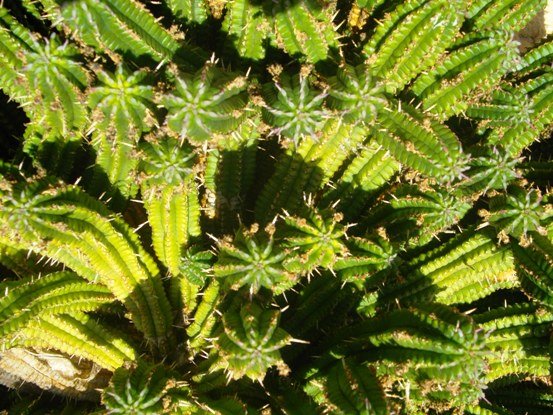Euphorbia mammillaris

Author: Ivan Lätti
Photographer: Ivan Lätti
Euphorbia mammillaris, commonly in Afrikaans the duikernoors (duiker spurge) or tepelnoors (nipple spurge) and sometimes the teat barrelwort, is a low-growing stem succulent that branches mainly near the base. The erect or leaning, club-shaped, green stems form large clumps to about 30 cm in height. The specific name, mammillaris, is derived from the Latin word, mammilla, meaning breast and word part, -aris, meaning having, referring to the branch shape.
The number of ridges or ribs on the stems varies considerably, usually between seven and ten, sometimes up to seventeen. The long whitish spines are the old, dried out ones; the young ones are reddish. These spines are the peduncle remains of past cyathia, sometimes retaining tiny hooks.
This is one of the dioecious euphorbias that grow male and female flowers on separate plants. The cyathia are yellowish green. The lobed fruits on short stalks are green.
The distribution is sporadic in the east of the Western Cape, from Albertinia and the Little Karoo to the Eastern Cape as far as far as Makhanda (Grahamstown).
The habitat is stony and clayey fynbos and shrubland slopes and flats. The species is not considered threatened in habitat early in the twenty first century.
The species resembles E. heptagona, but is smaller (Euston-Brown and Kruger, 2023; Frandsen, 2017; Smith, et al, 2017; Vlok and Schutte-Vlok, 2010; www.cactus-art.biz; http://redlist.sanbi.org).

